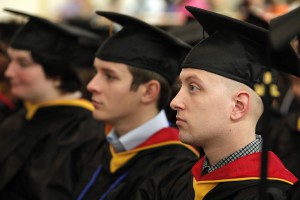1. BYOD
Emphasizing its effectiveness in facilitating personalized learning, the 2015 NMC Horizon Report names BYOD a key trend making a significant impact on higher education. The report outlines a Bradford Network Study that revealed 85% of the responding educational institutions currently allow students to use their own devices on campus, with 52% actively integrating those devices into the learning experience; “The link between the use of personal devices and increases in productivity gets stronger each passing year as more organizations adopt BYOD policies.”
2. Flipped Classroom
The flipped classroom model is continuing to make drastic improvements to higher education, most noticeably within the US. According to the Center for Digital Education’s survey of higher education instructors, 29% of faculty are currently using the flipped classroom model and a further 27% plan to use it within the next year. Highlighting its necessity within the learning sphere to provide the most flexible solutions that overlap with blended learning, the Horizon Report outlines how the trend is facilitating a more constructive, social, and autonomous learning environment.
3. Makerspaces
Makerspaces are “community-oriented workshops where tech enthusiasts meet regularly to share and explore electronic hardware, manufacturing tools, and programming techniques and tricks.” The makerspace trend is an ideal solution for higher education institutions looking to create more collaborative workspaces where learners in every discipline can practice skills outside the curriculum and apply them to 21st century life. Already featuring in many US institutions, makerspaces are continuing to crop up as universities seek new ways to harness a more skills-based approach to education.
4. Adaptive Learning Technologies
“The emergence of adaptive learning technologies reflects a movement in academia towards customizing learning experiences for each individual.” Adaptive platforms like Fishtree are already paving the way for personalized learning solutions in higher education where curriculum and lectures can be uniquely designed to cater to every student. Through the combination of personalization, collaboration and analytics, Fishtree offers a unique system, paving the way for the next generation of learning for higher education. “Integrating personalized learning was cited as a difficult challenge in this report, and adaptive learning technologies provide one pathway for tailoring educational opportunities.”
5. Wearable Technology
According to the report, wearable technology is set to see significant growth in higher education as the demand for wearables increases among college-aged students. A recent poll showed that 21% of US adult students use wearables, a figure that is expected to grow, urging educational bodies and e-learning providers to follow suit. Despite its gradual movement into the education sphere, many predict its immersion into the mobile campus ecosystem within the next five years.
Like what you’ve read? Find out which trends work for you with the all-in-one solution for flipped, mobile, and adaptive learning environments.
About the author:
Lorna Keane specializes in language teaching and has taught in second and third-level institutions in several countries. She holds a B.A in languages and cultural studies and an M.A in French literature, theory and visual culture. Follow her on Twitter or connect on LinkedIn.
Image credits: COD Newsroom / CC BY 2.0
